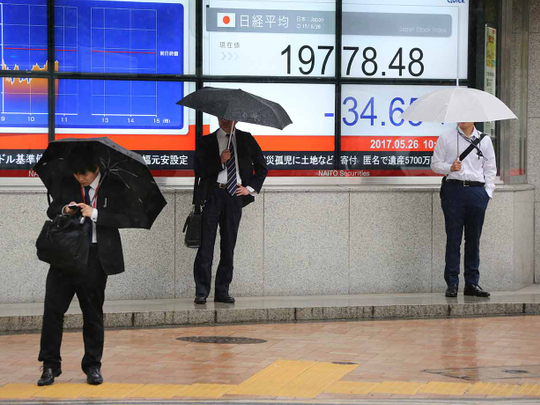
SINGAPORE: Oil extended falls on Friday after tumbling in the previous session when OPEC and allied producers extended output cuts but disappointed investors betting on longer or larger supply curbs.
At Thursday's meeting in Vienna, the Organization of the Petroleum Exporting Countries (OPEC) and some non-OPEC producers agreed to extend a pledge to cut around 1.8 million barrels per day (bpd) until the end of the first quarter of 2018. The initial agreement would have expired in June this year.
Crude oil plunged 5 per cent following the announcement, and held its losses early on Friday.
Brent crude futures were at $51.09 per barrel at 0348 GMT, down 37 cents, or 0.7 percent, from their last close.
U.S. West Texas Intermediate (WTI) crude futures were back well below $50, at $48.46, down 44 cents, or 0.9 per cent.
Britain's Barclays bank said the price falls were a result of expectations ahead the meeting for longer or deeper production cuts.
"Some market participants may have expected either a deeper cut, a longer one, inclusion of more countries, or other such icing on the cake," the bank said.
Barclays said the ongoing production cut would result in a drawdown of bloated fuel inventories, but added that OPEC's goal of bringing stocks down to their five-year average would not be reached within the timeframe of the production cut.
Other analysts, including at Goldman Sachs and Jefferies bank said a normalization of oil inventories would occur in early 2018.
Analysts also said that the OPEC-led production cuts would support a further rise in U.S. output.
Ann-Louise Hittle, vice president at energy consultancy Wood Mackenzie said that the "decision in Vienna sends a signal of continued support for oil prices from OPEC which helps U.S.
onshore drillers make plans" to further increase their production.
U.S. oil production has already risen by 10 percent since mid-2016 to over 9.3 million bpd, close to the output of top producers Russia and Saudi Arabia.
"OPEC agreeing to nine months without deeper cuts leaves prices at the mercy of inventories and U.S. production and demand," said Greg McKenna, chief market strategist at futures brokerage AxiTrader.
Goldman Sachs warned that the biggest risk to oil markets was what would happen next year, at the end of the OPEC-led production cut.
With U.S. output rising steadily and OPEC and its allies potentially ramping up production in 2018 to regain lost market share, many traders are already expect another price slump.












